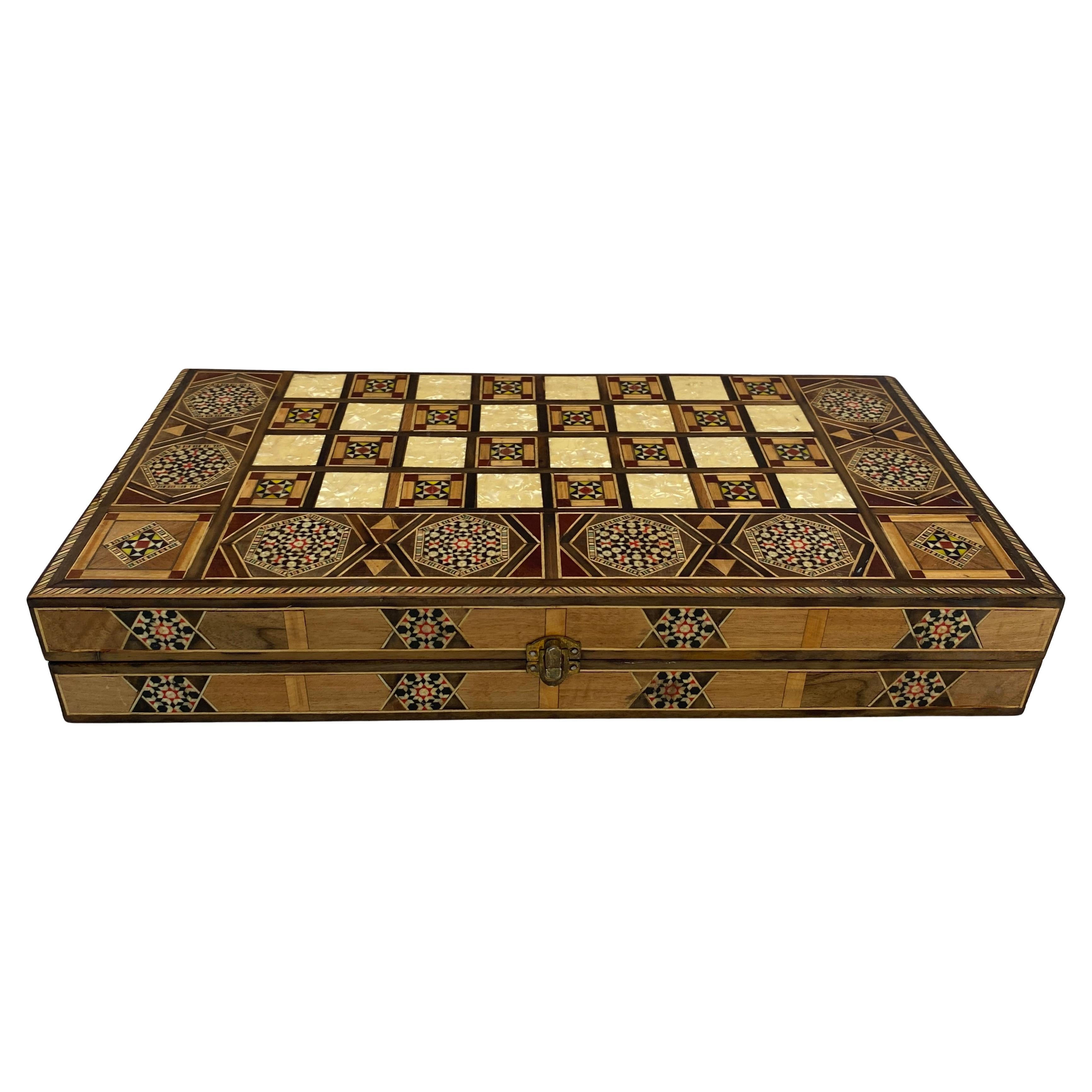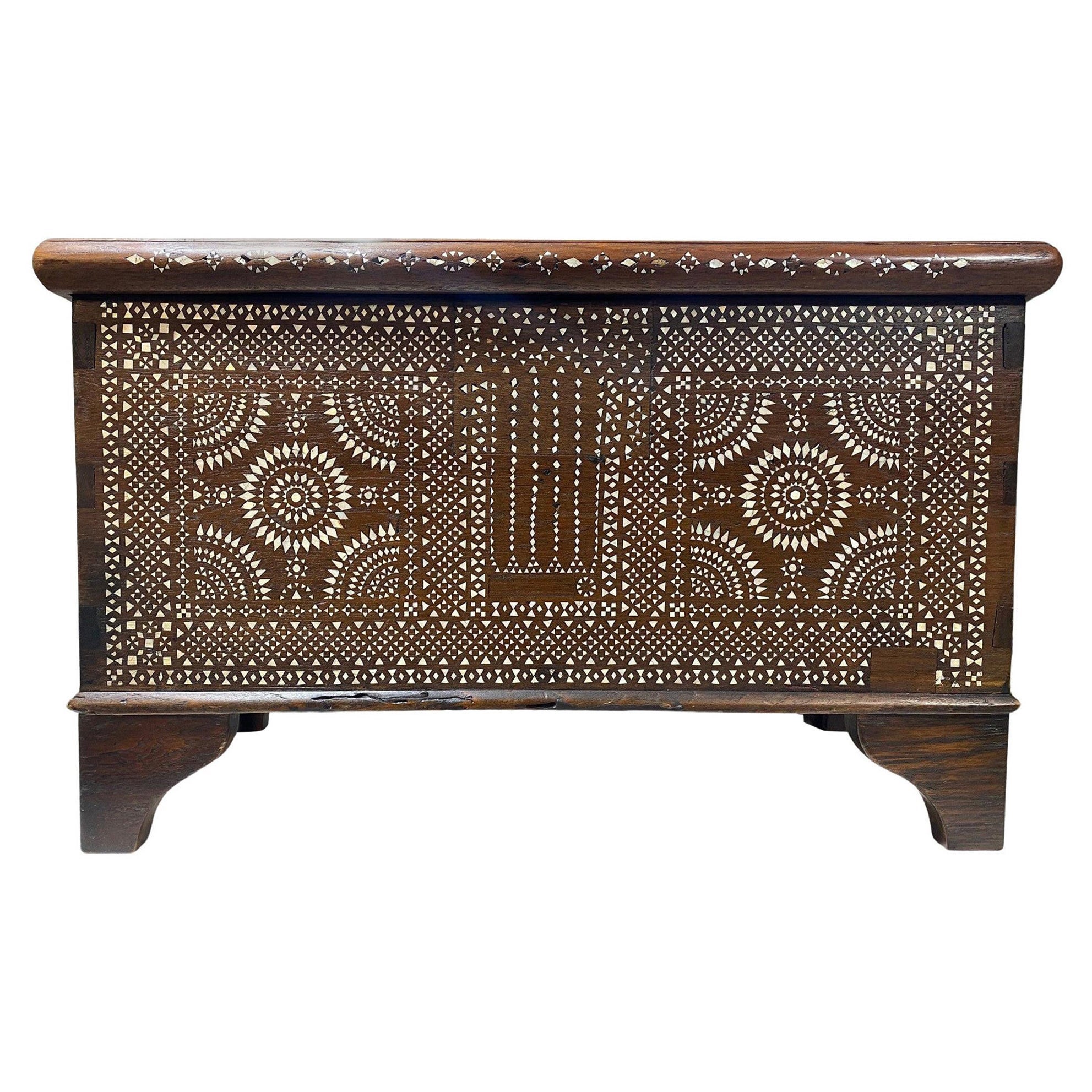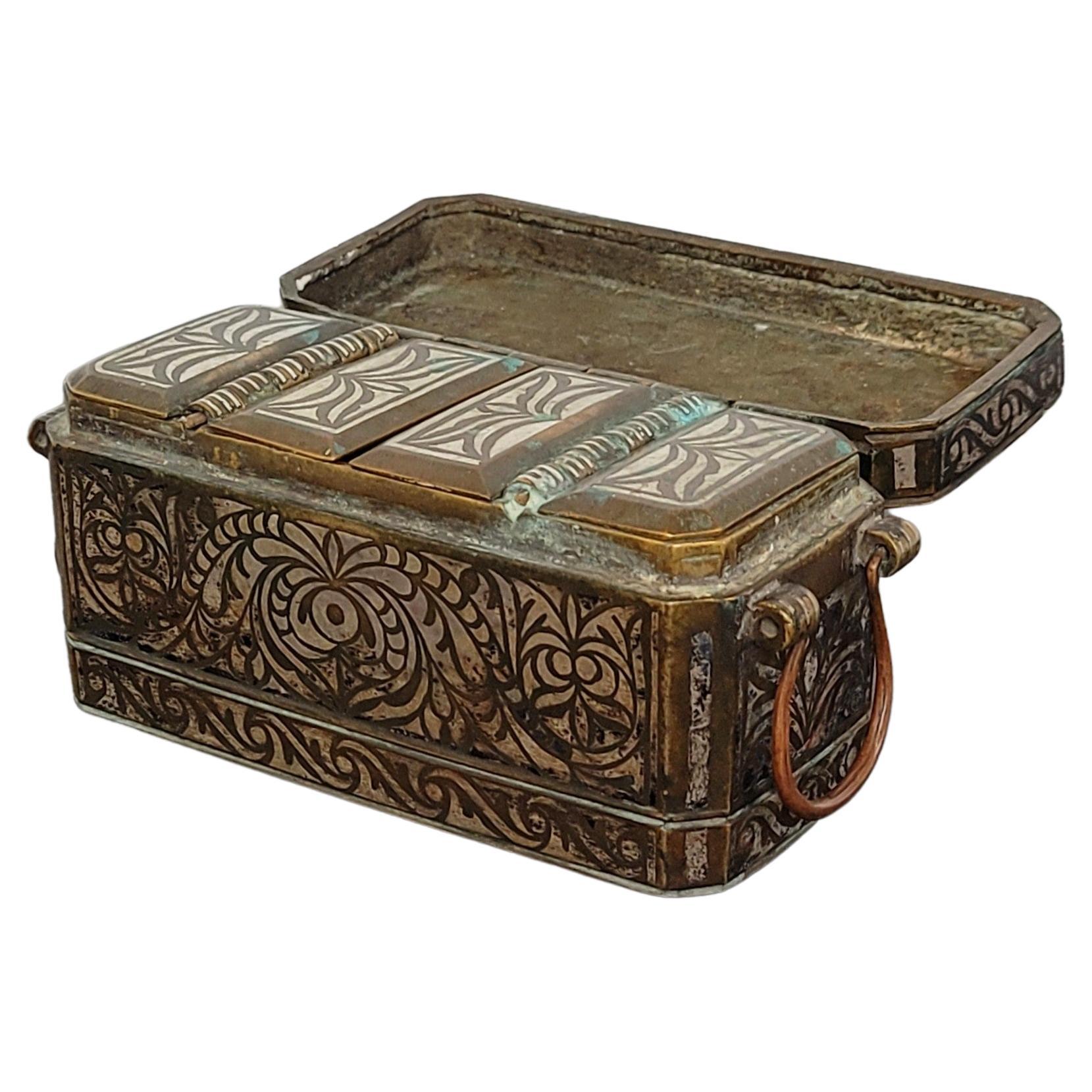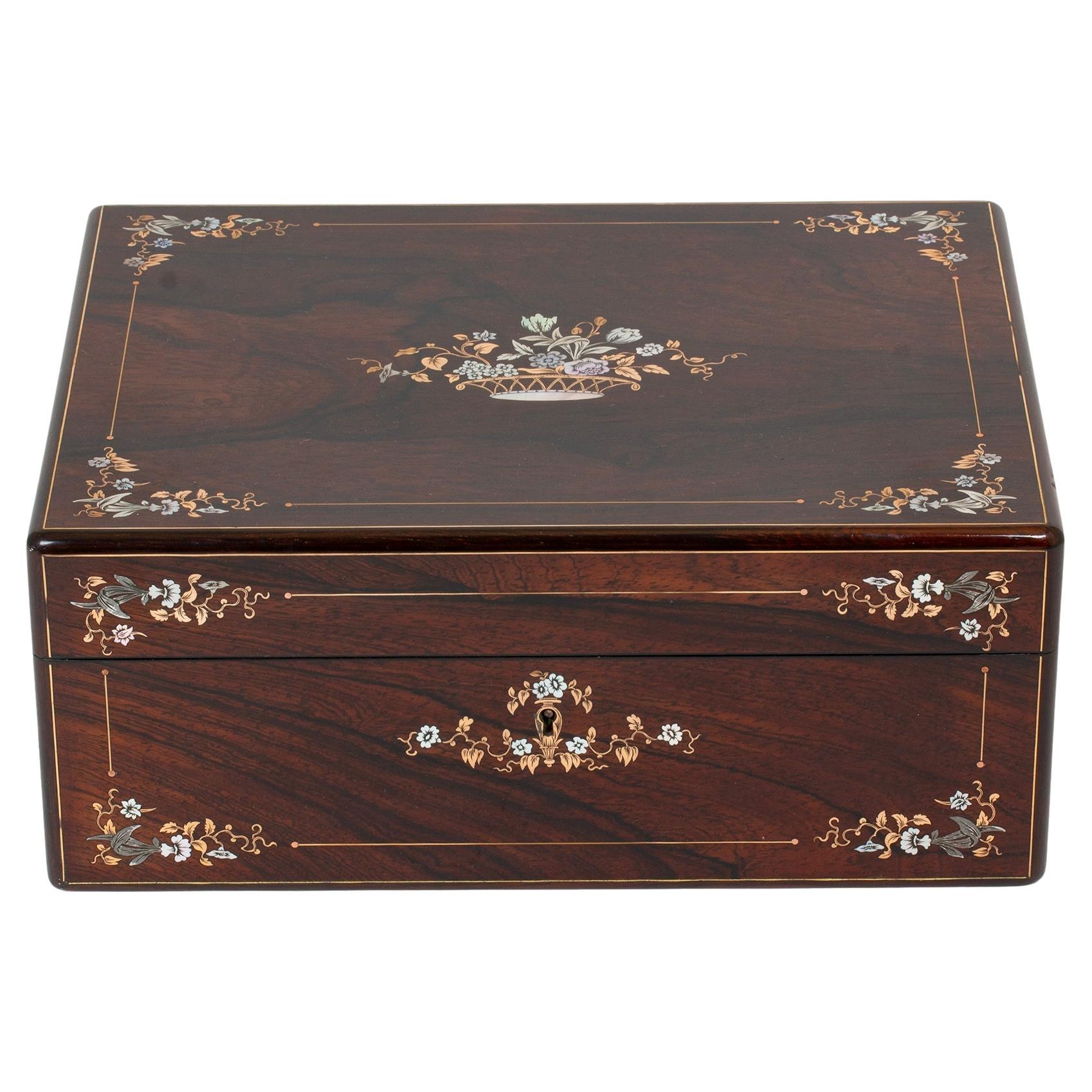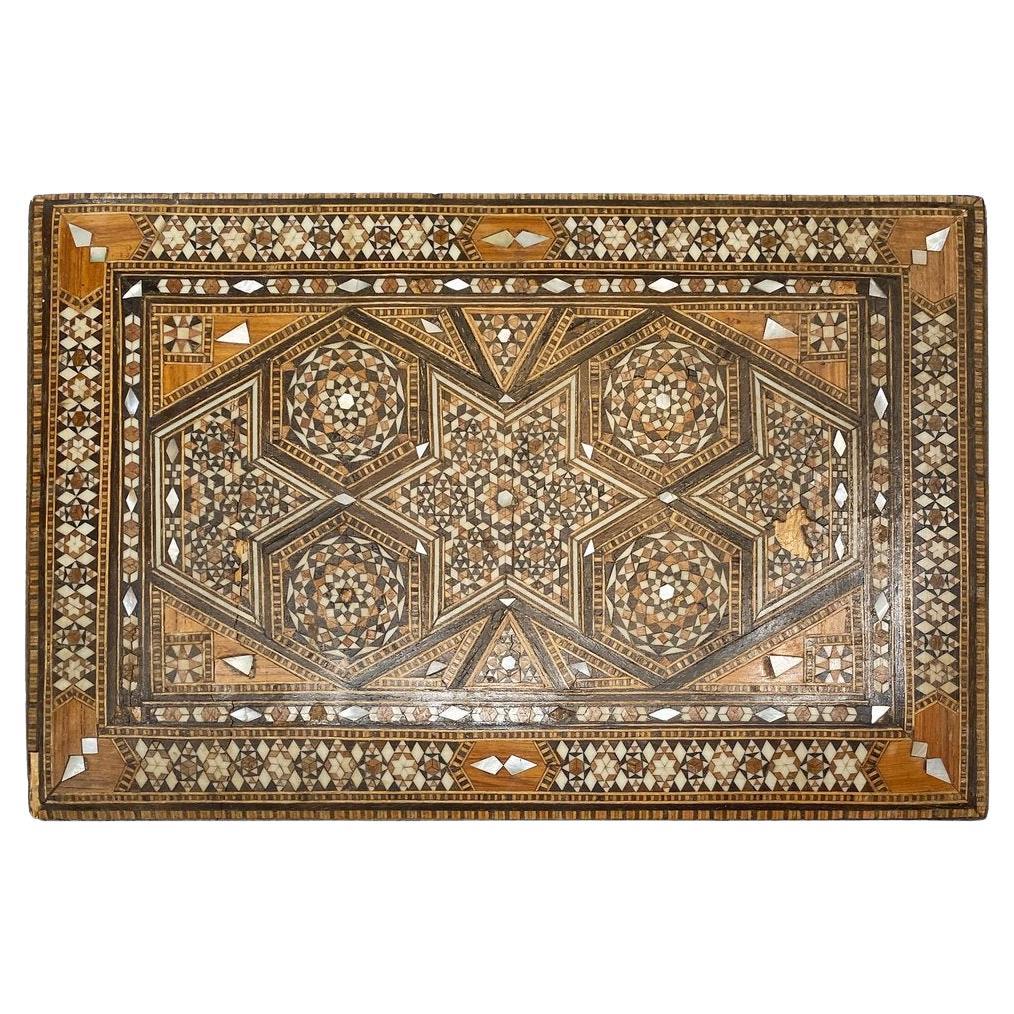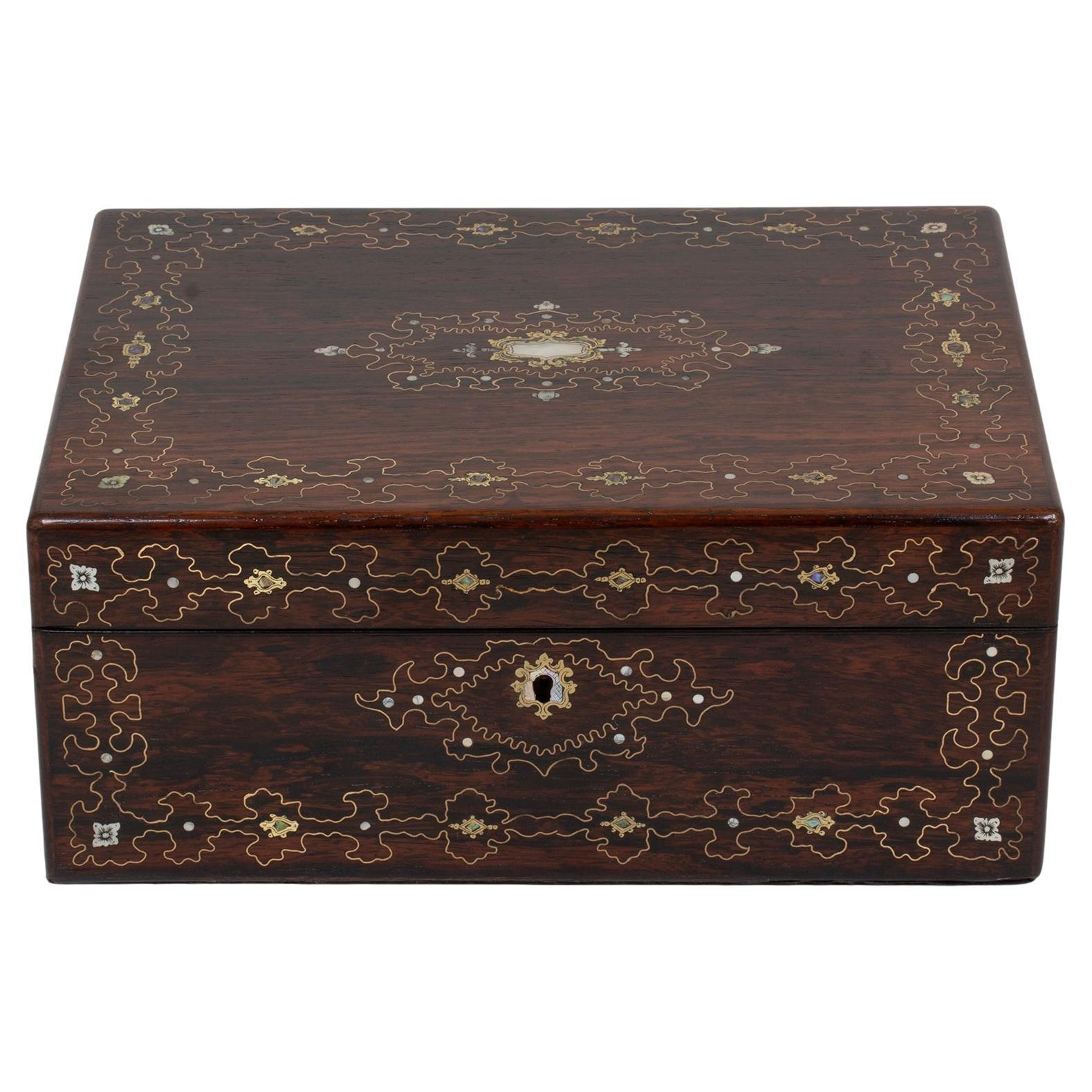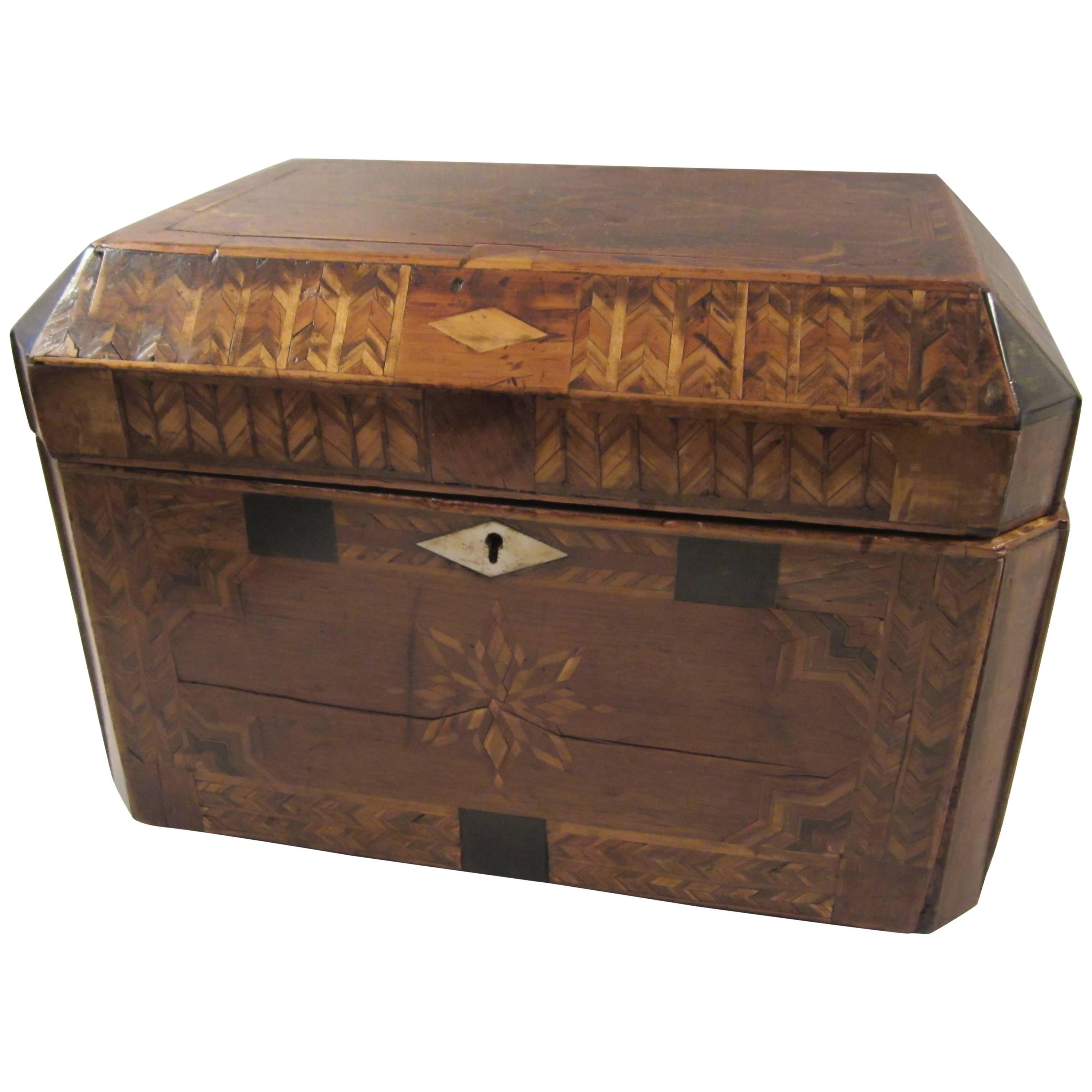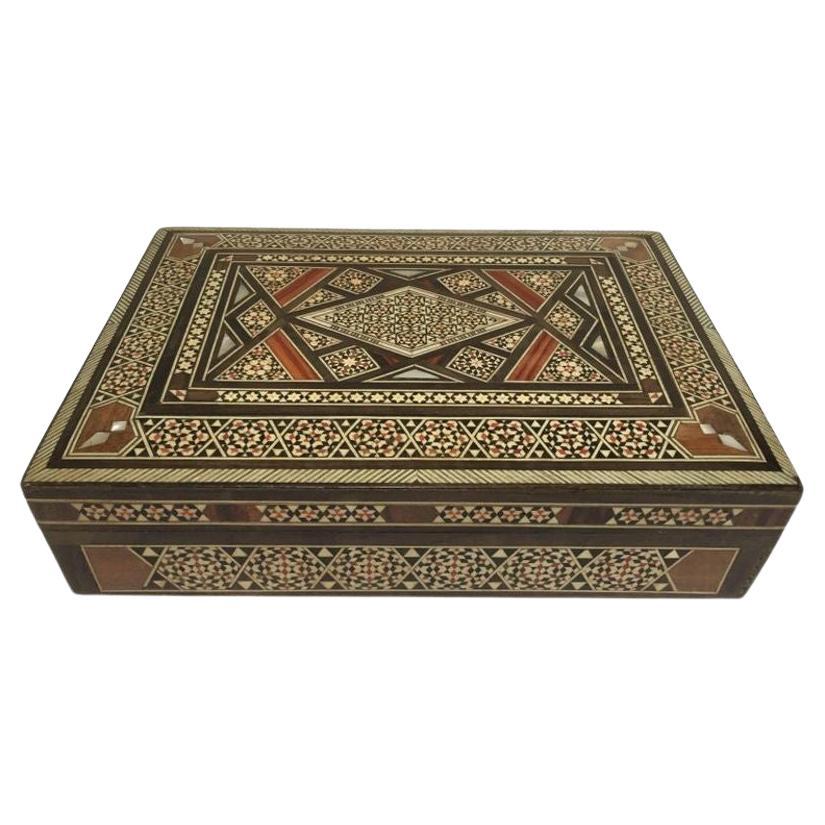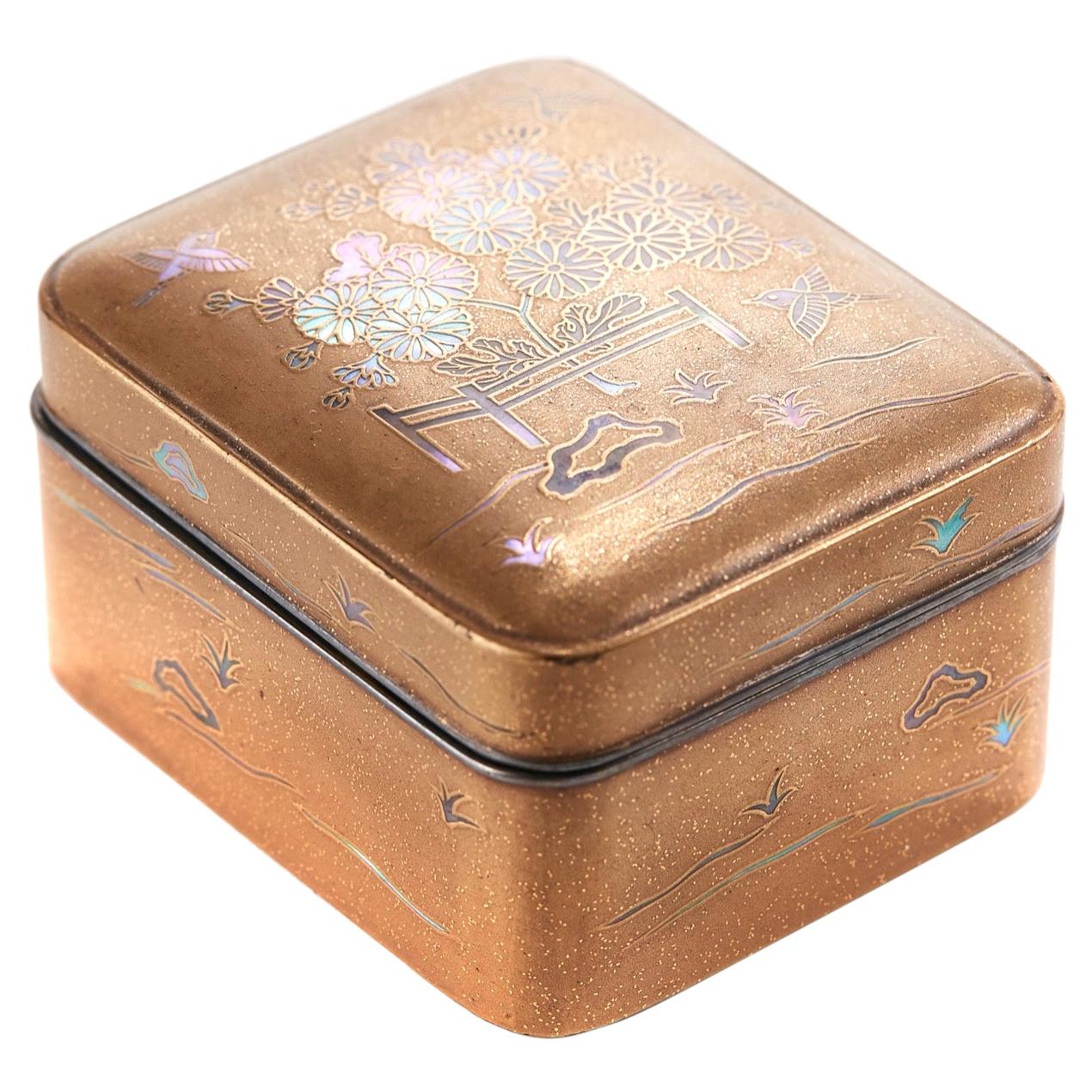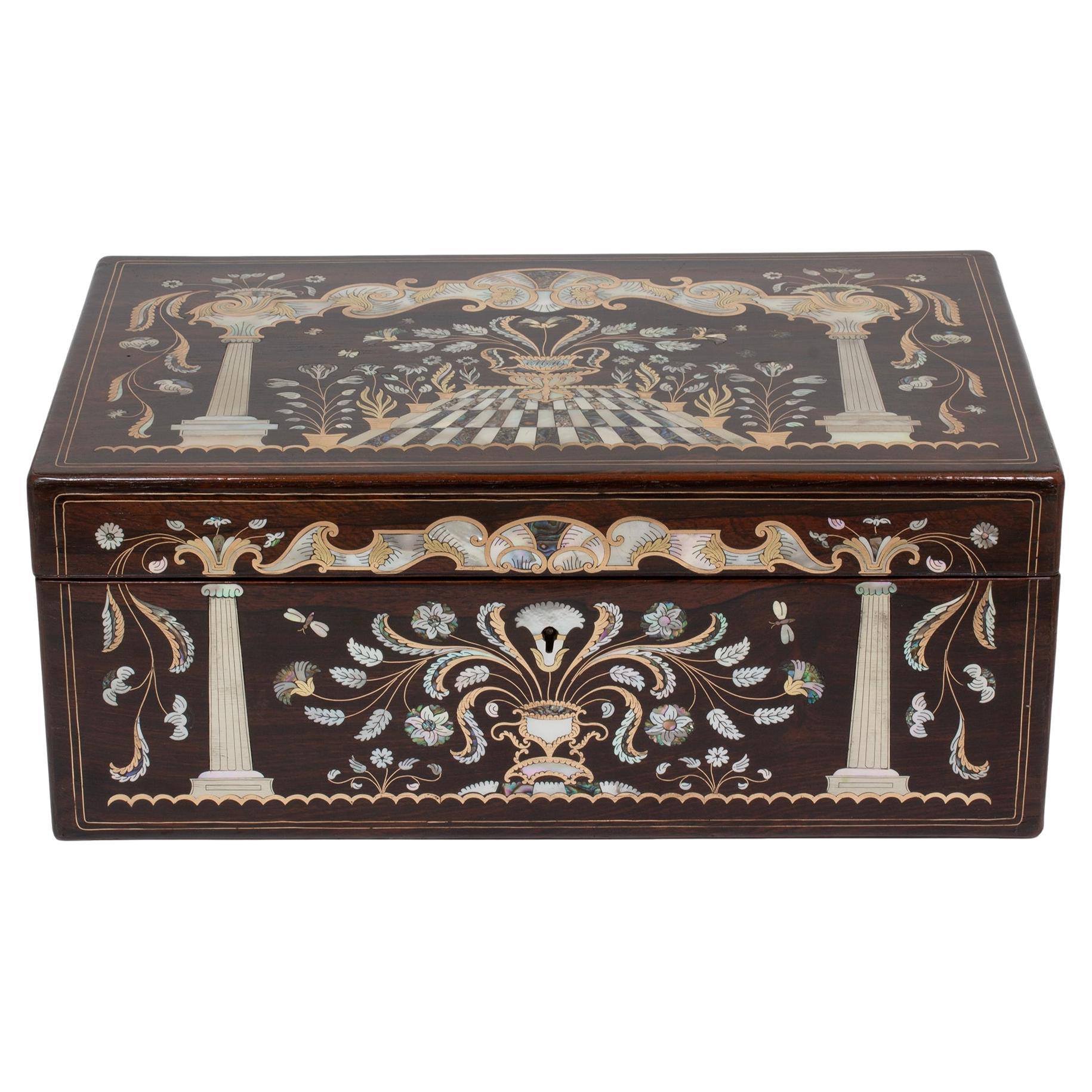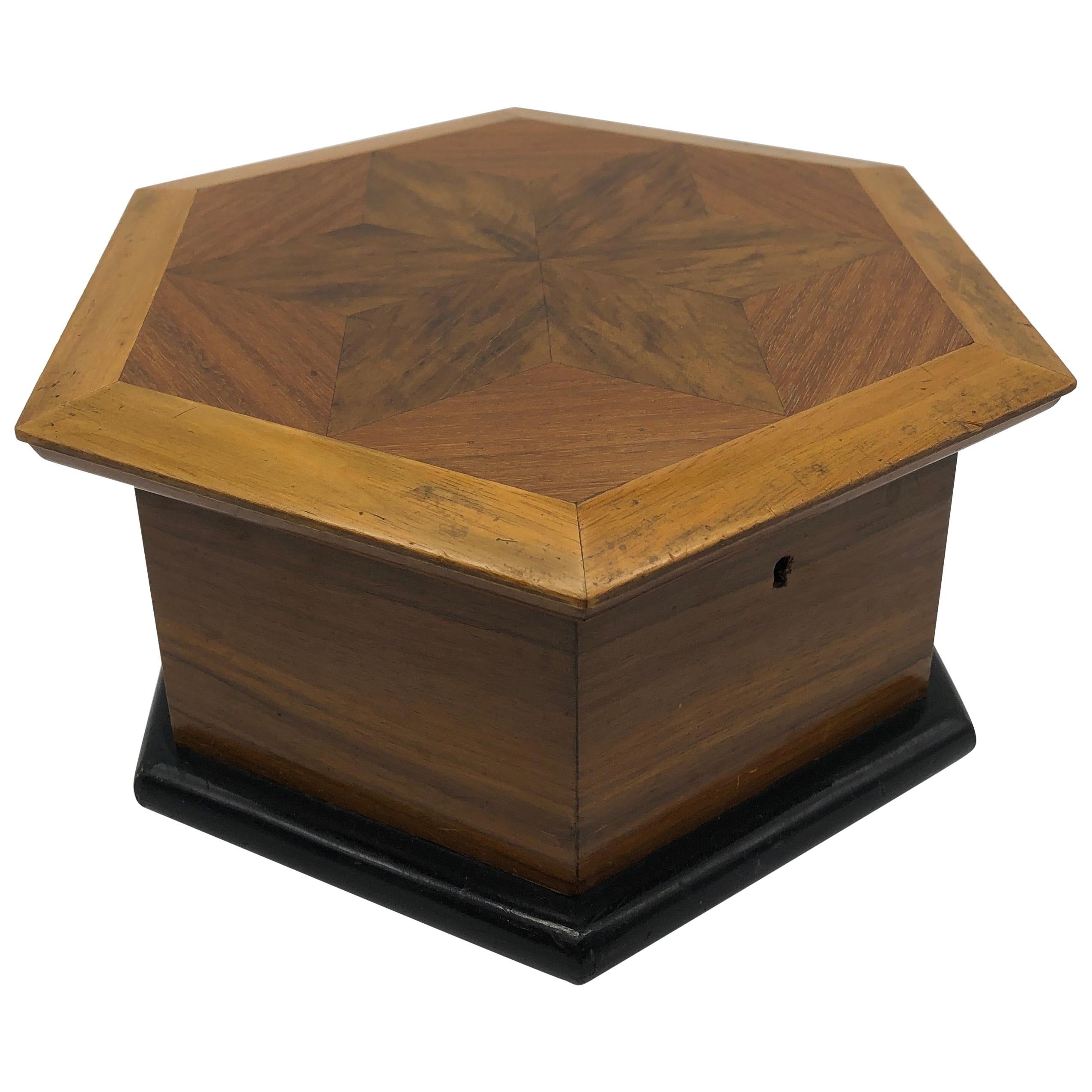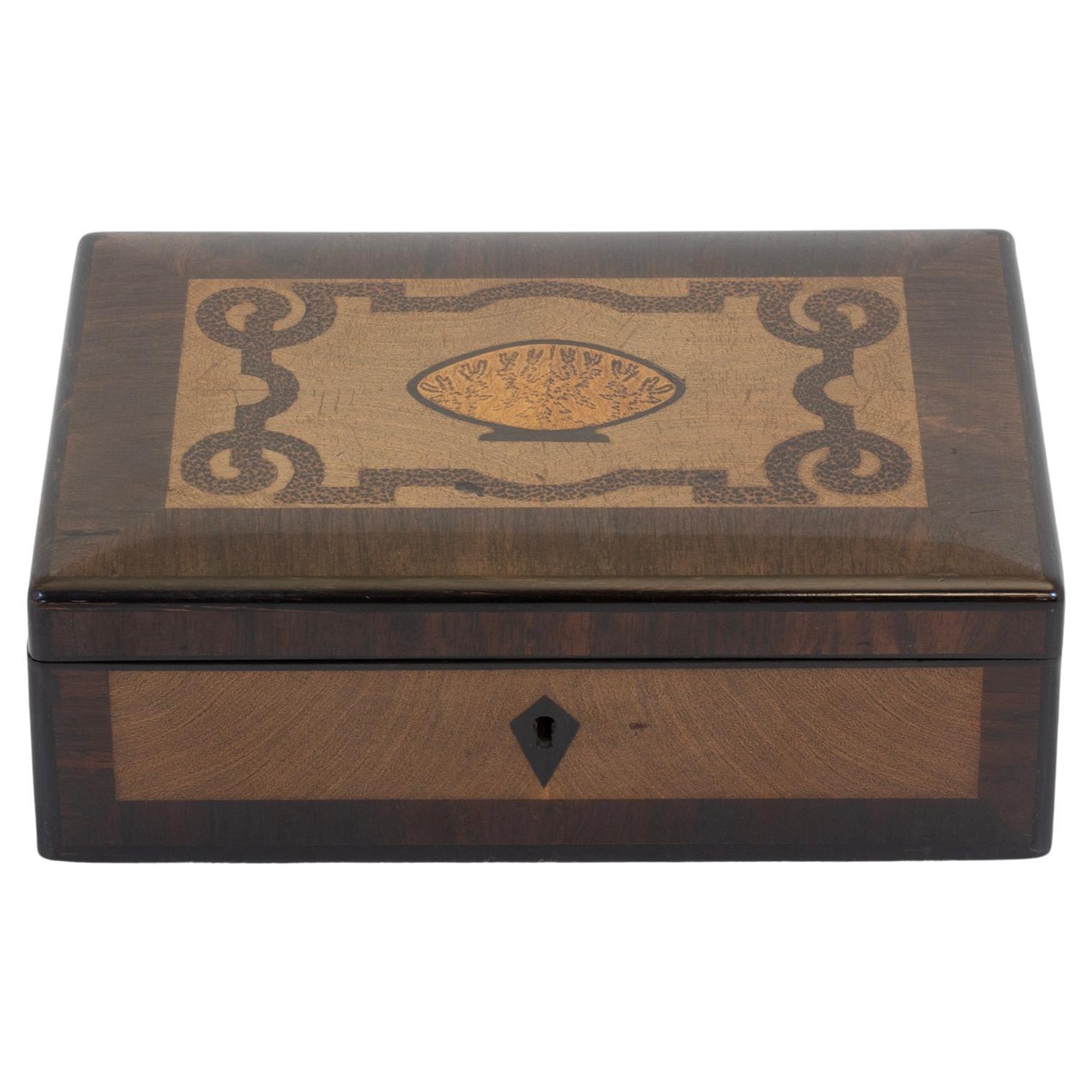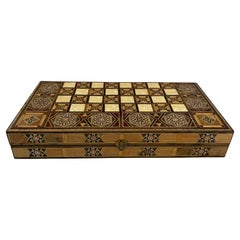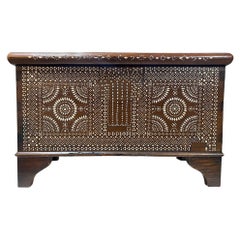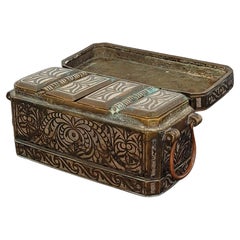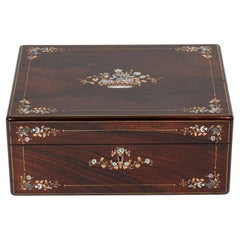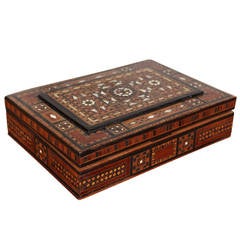
Antique Inlaid Syrian Box
View Similar Items
1 of 6
Antique Inlaid Syrian Box
Price:$600
$795List Price
About the Item
- Dimensions:Height: 3.13 in (7.96 cm)Width: 11.63 in (29.55 cm)Depth: 8.13 in (20.66 cm)
- Style:Islamic (In the Style Of)
- Materials and Techniques:
- Place of Origin:
- Period:
- Date of Manufacture:circa 1880s
- Condition:Wear consistent with age and use. Very good condition. Old repairs. Usual signs of age and wear, nothing unsightly or otherwise detracting.
- Seller Location:Culver City, CA
- Reference Number:Seller: J05047z55h961stDibs: LU79892573002
Authenticity Guarantee
In the unlikely event there’s an issue with an item’s authenticity, contact us within 1 year for a full refund. DetailsMoney-Back Guarantee
If your item is not as described, is damaged in transit, or does not arrive, contact us within 7 days for a full refund. Details24-Hour Cancellation
You have a 24-hour grace period in which to reconsider your purchase, with no questions asked.Vetted Professional Sellers
Our world-class sellers must adhere to strict standards for service and quality, maintaining the integrity of our listings.Price-Match Guarantee
If you find that a seller listed the same item for a lower price elsewhere, we’ll match it.Trusted Global Delivery
Our best-in-class carrier network provides specialized shipping options worldwide, including custom delivery.You May Also Like
Syrian Style Mosaic Wooden Inlaid Marquetry Box Backgammon Set
Located in Miami, FL
Stunning mosaic Backgammon set featuring a traditional Syrian style design and fine craftsmanship. Made in Morocco.
The board/ box is made of various woods and inlays. A genuine wo...
Category
20th Century Moroccan Mid-Century Modern Decorative Boxes
Materials
Wood, Fruitwood, Walnut
$1,090 Sale Price
27% Off
Beautiful Moorish Syrian or Asian Inlaid Inlay Wood Box Storage Chest Trunk
Located in Studio City, CA
Stunning mosaic, geometric design, and gorgeous craftsmanship. This work is made of beautiful dark wood and shell and/or bone inlay. The iron handles are also a nice touch. A genuine...
Category
20th Century Asian Moorish Decorative Boxes
Materials
Wood
Antique Southeast Asian Filipino Maranao Silver Inlaid Brass Betel Nut Box
Located in Forney, TX
A scarce fine quality antique silver-inlaid solid brass betel nut box (Lutuan), dating to the second half of the 19th / early 20th century, hand-crafted in Mindanao, Philippines.
Boxes such as this were used to store the areca nut (also known as the betel nut) which would be wrapped in a betel leaf with lime paste and other ingredients, often tobacco, for chewing. Similar to the European tea caddy, these boxes often served as a way to impress while showing off ones wealth.
Betel chewing was prevalent in the southern Philippines as in much of the rest of Southeast Asia. Wealthier Maranao families on Mindanao were able to afford elaborate silver-inlaid brass betel boxes such as this example. Such boxes were used to show off to guests and from which they were offered betel and the other component such as leaves and lime to make up the betel quid.
Rare large size, most extant examples of such boxes tend to measure around 5 inches in length. At slightly more than 7.75 inches the example here is larger than most.
The distinctive decorative box features a very heavy strong-box like rectangular shaped chest form with canted corners, copper handles, and a conforming hinged lid, lifting open to reveal an interior divided into three compartments covered by four hinged lids. Each of these doors is inlaid with silver in stylized orchid flower patterns.
Exceptionally executed throughout, the arabesque silver inlaid exterior is decorated to the top with a large orchid motif within scrolling obid-obid (stylized rope) borders. The front, back and sides are inlaid with sets of stylized tail feathers of the sari-manok bird beneath which are unusual, highly stylized whimsical zoomorphic faces that appear like cat or tiger faces. (Such stylisation is accounted for by Southeast Asian Islamic preferences to avoid the overt and this potentially idolatrous representation of animal and human forms. Designs such as these are drawn from a local design repertoire that has its origins in wood carving.
Although the spread of Islam in the Philippines began in the 14th century, mostly through the influence of Muslim merchants from the western Malay Archipelago, decorative arts in this design remain exceptionally rare. This lutuan represents a fine example of Islamic metalwork from the most eastern outreach of Islamic art and civilisation: Mindanao island being significantly further east than even China – artwork from Islamic Southeast Asia remains chronically under-represented in the world’s major collections of Islamic art.
PROVENANCE / ACQUISITION
Acquired from highly reputable auction house, Austin Auction Gallery, established 1983, Austin, Texas.
References
Brownrigg, H., Betel Cutters...
Category
Antique 19th Century Philippine Islamic Decorative Boxes
Materials
Silver, Brass, Bronze, Copper
Antique English Rosewood Inlaid Sewing Box
Located in Northampton, GB
Inlaid with floral sprays of engraved mother of pearl and brass
From our Sewing Box collection, we are delighted to offer this William IV Rosewood Inlaid Sewing Box. The Sewing Box ...
Category
Antique Early 19th Century English William IV Decorative Boxes
Materials
Silver
Antique Inlaid Box with Hidden Compartment
Located in Pittsburgh, PA
A captivating example of Syrian craftsmanship, this inlaid wooden box dates to 1960 and features detailed geometric marquetry in traditional motifs. Beyond its decorative appeal, the...
Category
Vintage 1960s Syrian Moorish Decorative Boxes
Materials
Wood
Antique English Rosewood Inlaid Jewellery Box
Located in Northampton, GB
Fully Partitioned Jewellery Tray
From our Jewellery Boxes collection, we are delighted to offer this Rosewood Inlaid Jewellery Box. The Jewellery Box of slim rectangular form venee...
Category
Antique Early 19th Century English Early Victorian Jewelry Boxes
Materials
Shell, Wood
Recently Viewed
View AllMore Ways To Browse
Syrian Marquetry Box
Moorish Mother Of Pearl Box
Bronze Lidded Box
Antique Silver Stamp Box Boxes
French Art Nouveau Box
Sri Lanka Antique
Murano Glass Box Vintage
Vintage Cigarette Box
Chinese Carved Box
Lacquered Large Boxes
Black Stone Decorative Box
Gilt Wood Box
Black Lacquered Boxes
Ceramic Lidded Box
Exotic Wood Box
Antique Boxes India
Antique Travel Box
Decorative Coffee Table Boxes
